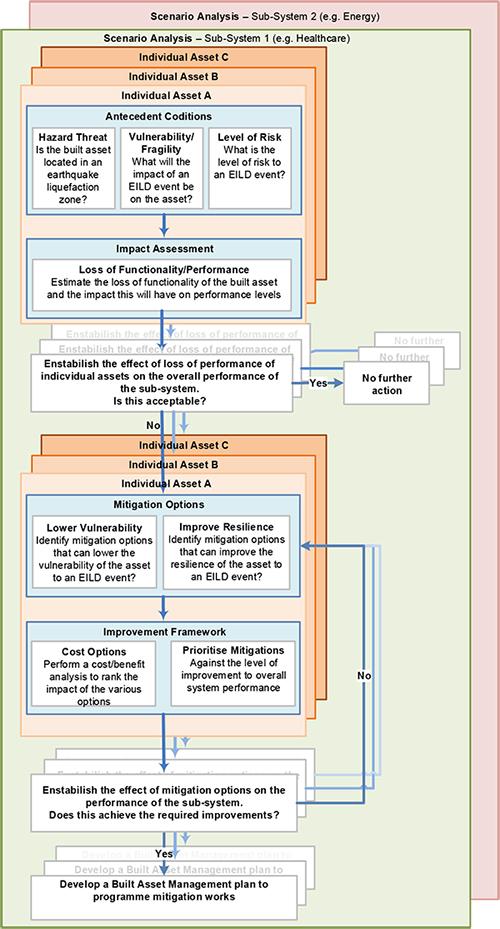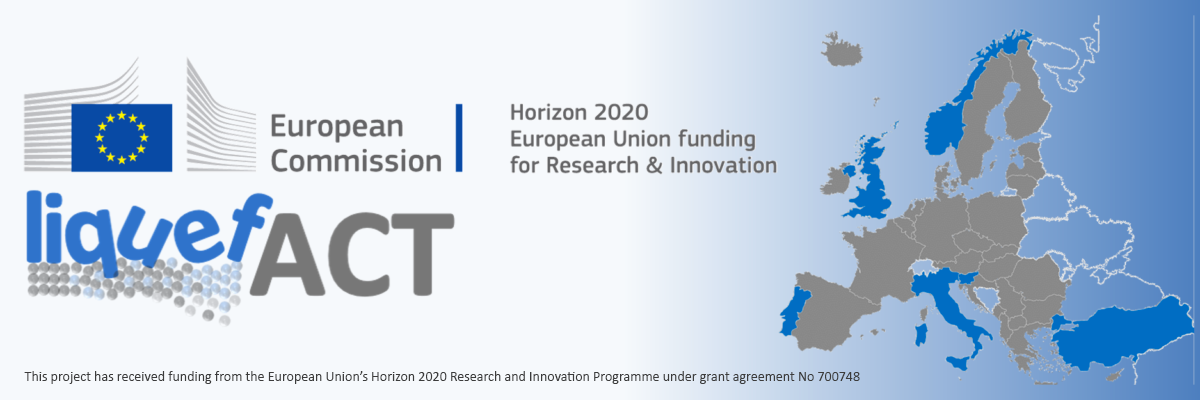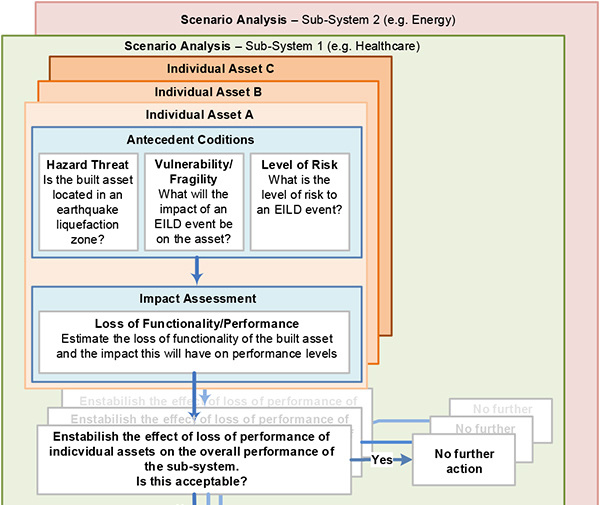The aim of work package 5 is to develop the tools (models and metrics) that can be used to assess the vulnerability, resilience and adaptive capacity of European regions to earthquake induced liquefaction disaster (EILD) events. The work builds on the theoretical model developed in WP1 (now completed) by developing a series of application tools that will be used to support the Resilience Assessment and Improvement Framework (RAIF).
 Following a detailed review of resilience tools currently available or under development, the UNISRD Disaster Resilience Scorecard for Cities (available here) was identified as the most suitable for assessing community resilience to Disaster events. However, whilst the scorecard covers most of the resilience factors identified in WP1, it is not specifically calibrated to assess the impact that an EILD event would have on community resilience. Researchers at Anglia Ruskin University, UK are currently working with LIQUEFACT partners and stakeholders to customise the standard scorecard and produce a version that specifically address liquefaction.
Following a detailed review of resilience tools currently available or under development, the UNISRD Disaster Resilience Scorecard for Cities (available here) was identified as the most suitable for assessing community resilience to Disaster events. However, whilst the scorecard covers most of the resilience factors identified in WP1, it is not specifically calibrated to assess the impact that an EILD event would have on community resilience. Researchers at Anglia Ruskin University, UK are currently working with LIQUEFACT partners and stakeholders to customise the standard scorecard and produce a version that specifically address liquefaction.
Although the UNISRD Scorecard has been identified as the most suitable tool for assessing community resilience, it does not provide the level of detail required by Critical Infrastructure (CI) owners/managers to allow them the assess their vulnerability and resilience to an EILD event. As such researchers at ARU are working with LIQUEFACT partners and stakeholders to develop a CI resilience tool that can be integrated into the RAIF. The CI tool is based on a multi-criteria hierarchy model of resilience that uses weighted factors to assess the resilience of CI systems from organisational/managerial, technical and service delivery perspectives.
The research team is currently in the process of identify performance metrics and developing a weighted score framework based on the Analytic Hierarchy Process (Saaty, 2008).

